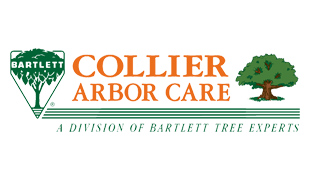|
Current Issue - Spring/Summer 2013 Show Back Issues |
| ||
Sustainable Sites Project A recently installed tank fuels our fleet with bio-diesel. Our “Arbor
Car” sales vehicles run on bio-diesel and get 40 mpg.
A recently installed tank fuels our fleet with bio-diesel. Our “Arbor
Car” sales vehicles run on bio-diesel and get 40 mpg.
Collier Arbor Care has been chosen to participate in an international pilot program testing the nation’s rating system for green landscape design, construction and maintenance. Collier’s site on SE Jennifer Street, completed in 2002, is one of 175 pilot projects from 34 states, Canada, Iceland and Spain participating in the program designed to evaluate the new national uniform Sustainable Sites Initiative (SITES) rating system for sustainable landscapes. Collier’s initial site development, which abuts Carli Creek, included replanting and creation of a conservation corridor along the creek and installation of bio-swales to collect run-off water from parking lots and the two buildings on the property. Under the pilot program the firm will retrofit the property’s irrigation system, re-develop the bio-swales into a rain garden and replant the conservation easement. The firm also will use 100 percent organic products for weed and pest control and for plant maintenance and soil health. “We’re using composted mulch, compost tea and organic fertilizer for plant maintenance and soil health,” said Collier President Terrill Collier. Although not part of the SITES project, Collier Arbor Care also is in the process of installing solar panels. Ultimately, Collier hopes to obtain LEED certification for the site. Under the pilot project, Collier will be reducing landscape irrigation by 70 percent and replanting the conservation corridor with native shrubs to make it a mini-arboretum. “When we’re finished, we’ll have 40 species of trees and that’s not bad for an industrial site said Collier. Poison Oak Photo: Gary A. Monroe @ USDA-NRCS PLANTS Database
Photo: Gary A. Monroe @ USDA-NRCS PLANTS Database
If you work outdoors in the Northwest you have probably encountered the effects of the skin rash of poison oak (Toxicodendron diversilobum). Poison-oak occurs only on the Pacific Coast (poison ivy in the East), where it is common, and ranges from Canada to California. In the open it forms a dense shrub. In shade, it is a climbing vine often associated with Douglas fir or oak. Its leaves are divided into 3 leaflets with lobed edges. Remember the old adage: “Leaves of three let it be”. The leaves are bronze colored in the spring, turning green with a slight glossy look. In the fall, they turn a bright red and then drop. Poison-oak leaves and twigs have a surface resin, urushiol, which causes a severe allergic reaction, itching, rash and blistering in most people. Some people show immunity but most will become sensitized over time with exposure. Avoidance is the best protection from getting the rash. Never burn poison oak, the smoke is also toxic. If working in areas that might contain poison oak, wear gloves, a long-sleeved shirt and pants. There are protective creams for prevention and also a special cleansing soap under the Tecnu label to wash off the toxic resins when exposed. Ordinary soap does not work and may cause it to spread.
|

(Top) Rhododendrons add spectacular color and thrive in the northwest climate (Middle) Root weevil larvae damage (Bottom) Signs of chlorisis Rhododendron and Azalea CareThe spectacular spring flowers of rhododendrons and azaleas make them among the most popular garden shrubs in the northwest. However, azaleas and rhododendrons are shrubs for all seasons as the leaves add a pleasing, deep-green color to the garden. Some deciduous azaleas add bright fall color before the leaves drop. With over several thousand species and named varieties, there is a dizzying array of sizes, shapes, and flower color to fit your taste. Several species of rhododendrons grow here natively so they flourish in our climate, and are very reliable performers in the landscape. Rhododendron and Azalea DifferencesAll azaleas and rhododendrons are classed in the genus Rhododendron. Azaleas generally are smaller plants, have smaller flowers with five stamens (male flower parts that produce pollen), bloom a bit earlier, and have much smaller leaves that may be deciduous or evergreen. Rhododendrons usually are bigger plants, have larger flowers (10 stamens), bloom later, and have large leaves that persist during the winter.LocationRhododendrons and azaleas grow natively on forest floors, in shaded habitats, with acidic soils rich in organic matter and a mulch layer of leaf litter. Matching these conditions is the key to their good health in the landscape. Locate plants in areas with good soil drainage, acid pH and partial shade that are sheltered from direct afternoon sun and winter winds. Generally rhododendrons and azaleas that are smaller growing, with smaller leaves and red varieties can tolerate full sun. Very deep shade may cause poor growth and failure to bloom.SelectionSize is the first consideration. Rhododendrons range from ground hugging varieties reaching about a foot tall, to larger hybrids which can reach tree like (10í) proportions. Flower colors vary from white to yellow into the red and purple tones. Some deciduous azaleas are available in pastel shades ranging from cream, through pink to yellow and orange. Bloom time varies from March thru June.Care
ProblemsAlthough rhododendrons and azaleas thrive in our soils and climate there are several serious problems. Visit the Fact Sheets area of the web site for more information and controls for these problems or schedule a visit with one of our certified arborists.
VarietiesThere are thousands of rhododendrons and azaleas you can choose, but here are some selected varieties that do well in our climate:
Winter Injury to Plants
A winter-injured Viburnum Many commonly planted ornamentals have suffered from cold winter injury when our temperatures went down into the teens this last winter. We have found injury and plant death from cold temperatures to the following plants: Escallonia, Hebe, Viburnum, Jasmine and Daphne, to name a few. These are all introduced ornamental plants that are genetically not cold hardy in our climate during our coldest winters. Our native shrubs are adapted to our cold weather and were not affected. Stems of tender plants can freeze then split. This prevents transportation of food and water up and down the stem and the whole plant dies. Flower buds can die outright from the cold. Leaf tissue can freeze or burn, turn brown and die outright. How to Tell Whether a Tree or Branch is AliveBefore pruning a damaged-looking plant to almost nothing or removing it, check to see whether it is still alive. Scrape the bark away with a fingernail or knife. Live branches are bright green or white just beneath the bark. Dead branches are brown and may be soggy. Check the tree or shrub in several places: at the twigs, down the branches, and at the crown or soil line. If it is dead all the way down to the lower stem, remove it.What to Do for Winter-injured Plants
Top 12 Small Native Trees For Western Oregon and Washington
Weeping Alaska Cedar Continued from last issue: Spring 2010. Bitter Cherry (Prunus emarginata)
20 to 30’ tall, 15-20’ spread Cascara (Rhamnus purshiana) 15-30’ tall, 10-25’ spread Alaska Cedar (Chamaecyparis nootkatensis
var. ’pendula’) 20-30’ tall, 5-10’ spread Shore Pine (Pinus contorta var. contorta)) 20-30’ tall,
20-30’ spread Pacific Yew (Taxus brevifolia)) 20-40’ tall, 10-30’ spread Mountain Hemlock (Tsuga mertensiana)) 20-30’ tall,
10-15’ spread |
|
Home |
Services |
The Arbor Advisor |
Garden Calendar |
About Us |
Fact Sheets |
Contact Us |
Site Map Collier Arbor Care Portland 503-722-7267 Vancouver (360) 693-6056 Site contents and design ©2013 Collier Arbor Care |







 top »
top »